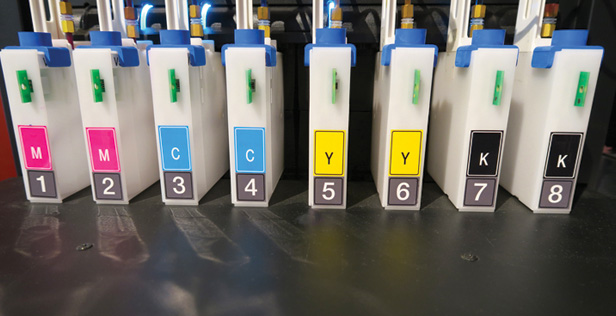News July 09, 2024
Experts Project Huge Growth in Digital Packaging and Apparel Printing Markets
Studies released this week estimated that the digital textile printing market could grow by $3.3 billion by 2028 and the digital packaging printing market to near $60 billion by 2030.
Two reports released within the last week have detailed the growth in the digital printing sector.
One projected the digital textile printing market to grow by $3.3 billion over the next four years. The other estimated that the digital printing packaging market will grow to nearly $60 billion in total market value by 2030 – up from $29.2 billion in 2022.
The digital textile printing report, published by Technavio, cited variables such as increasing numbers of trade shows and growing ubiquity of UV-cured inks, which decorators can apply to things like T-shirts and signs without having to worry about smudging or additional coatings.

“Their properties include scratch and abrasion resistance, enhanced chemical and solvent resistance, no emissions, superior bonding, superior durability in outdoor spaces, and enhanced gloss,” read the report, which also noted that 35% of the growth could come from European customers, thanks to textile production itself growing there.
A takeaway from the findings, analysts said, is that in a world where print media is facing challenges related to digitalization, printers can turn to apparel decoration and apparel customization – particularly with digital printing processes – for added stability.
Using digital printing would allow for further innovation in apparel, such as “smart textiles with conductive functionalities, antimicrobial properties, and UV protective properties,” all of which appeal to end-buyers in the healthcare and fitness markets.
The growing number of in-person trade shows means there would be an increasing need for digitally printed textiles like soft signage and table covers, according to the report.
Packaging and Labels
Meanwhile, the other report released this week by market research firm Market Business Insights found that the digital printing sector, particularly as it pertains to packaging, will likely see growth as a result of rising demand for “cost-effective, high quality and customizable packaging solutions.”
The appeal for digital printing in particular includes the relatively short turnarounds, reduced waste and ability to create high-quality images for branding on packaging.
The growth in e-commerce is another factor driving the packaging printing industry, and two particularly significant end-buyer verticals are the pharmaceutical and food/beverage industries.
Additionally, QR codes and NFC tags will continue to be prevalent in smart packaging, as end-users became more proficient in QR code technology during the pandemic years, where everything from restaurant menus to healthcare instructions were delivered via QR code scanning. They bridge a gap between tangible printed media and the digital landscape, where a brand can change the information on their site or the destination of their QR code without needing to reprint new material.
As with other print and promotional products solutions, a growing number of customers want products that are sustainably sourced and manufactured, as well as packaging that is recycled or recyclable.
The study pointed to ways printing technology has grown recently, giving digital printing the edge over other techniques, but detailed some challenges that printers and distributors could face.
“Advancements in digital printing technologies, such as inkjet and laser printing, have improved the efficiency and quality of packaging, making it more accessible for small and medium-sized enterprises,” the study said “However, the market also faces challenges, such as high initial setup costs and the need for continuous technological advancements to stay competitive.”
The need for skilled professionals to maintain the printing equipment is also a concern, but overall, the growing demand for sustainable, smart and personalized packaging is expected to outweigh the challenges for printers looking to add digital print technology to their repertoire, as well as for promotional products decorators and manufacturers looking to bolster their operations with traditional print capabilities.
